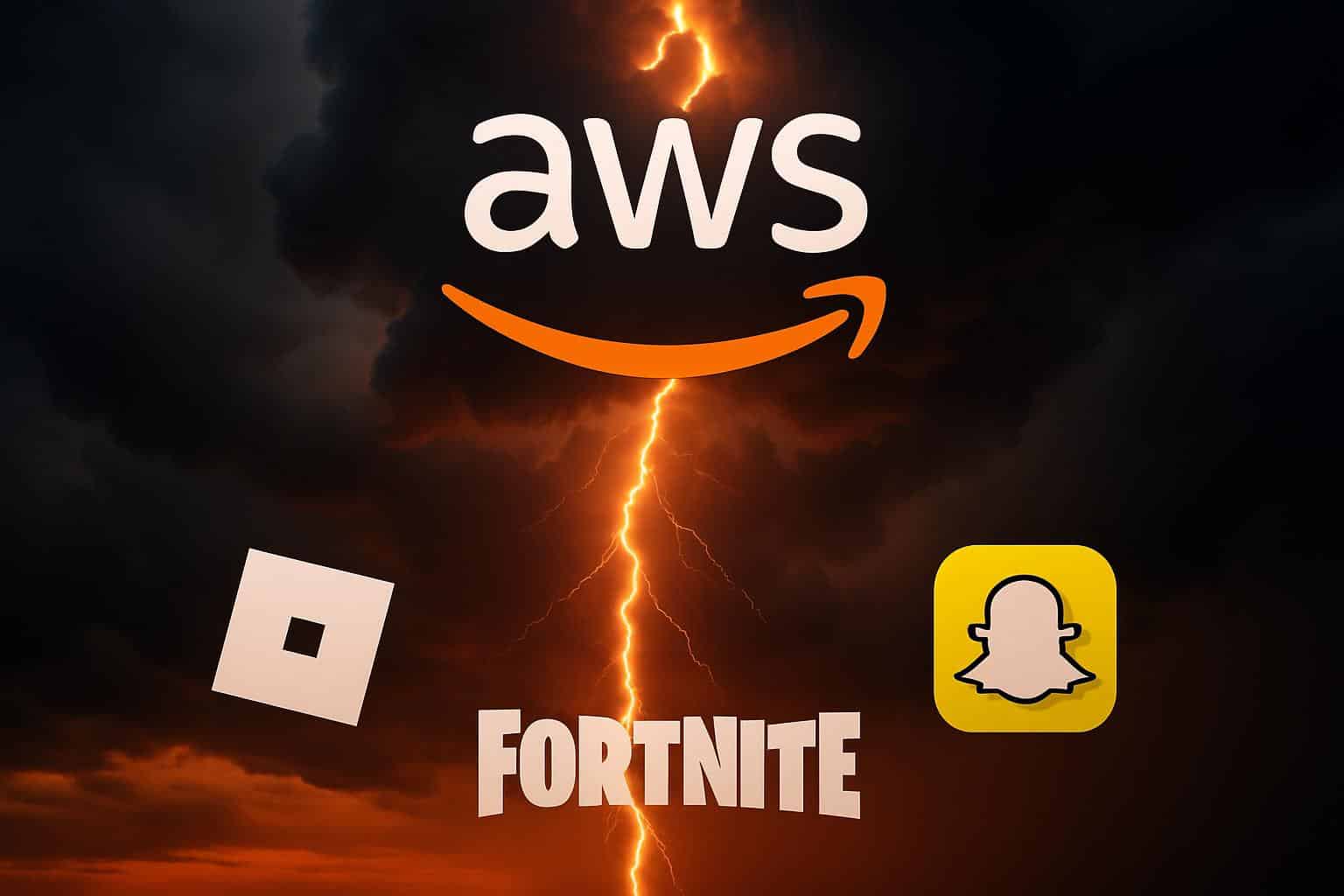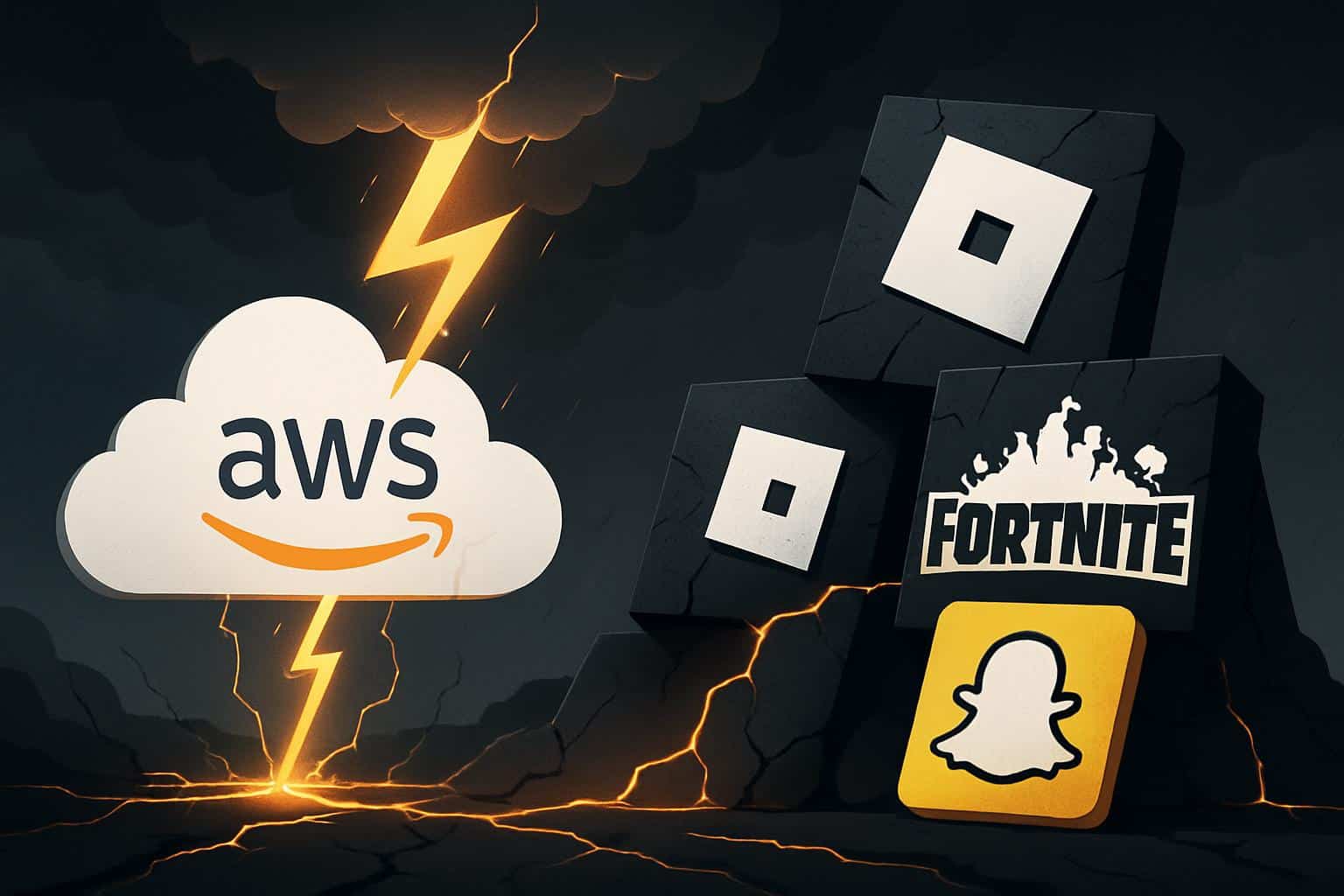An outage that hit Amazon Web Services spread to affect all sorts of consumer apps, with players unable to log in, streams stuttering and messages refusing to go through. Some of the most visible outages included Roblox, Fortnite and Snapchat, with software bugs that led to intermittent downtime emanating from infrastructure in AWS’s well-trodden US-EAST-1 region.
AWS admitted increased errors on its Service Health Dashboard, with issues related to DynamoDB APIs and DNS resolution cited. Engineers said that they were rolling out mitigations and that traffic was coming back, but that some queued requests and retries still were moving through the system.

What AWS Says About the Outage and Root Causes
Status posts from AWS suggested the incident revolved around services that served US-EAST-1, a default location for many workloads. Problems in a foundational database service like DynamoDB can ripple into login failures, timeouts and inconsistent data reads, while DNS hiccups fan these flames by keeping services from reliably finding each other.
The company reported “positive signs of recovery” as fixes rolled through, but warned that there likely would be lingering slowness while backlogs were addressed. That pattern is consistent with previous large-scale cloud incidents, in which stabilisation has come before the final backlog drains and error rates return to their pre-incident baselines.
Apps And Services That Are Reporting Problems
Reports on public incident trackers and official status pages suggested the intermittent issues stretched across a wide roster: Roblox and Fortnite login and matchmaking; Snapchat messages stalled pending; streaming apps that include Prime Video, Disney+, Hulu, HBO Max and Roku; social-app access relying on Reddit and Signal; smart-home controls connected to Amazon Alexa or Ring.
Financial and mobility services also experienced symptoms, with users reporting to Downdetector.com outages at Robinhood, Venmo and Lyft, as well as such banking and chat tools as Chime. Entertainment and service engines such as Steam, IMDb and Character.AI broke down, and some travel and telecom touch points — from United Airlines check-in pages to AT&T account features — were inaccessible or sluggish. Other apps that users mentioned in reports included Amazon Music and MyFitnessPal.
Failure does not come in a single uniform size. Game services could time out when forming a party, streaming apps may download menus but fail at playback, and social tools could allow users to compose messages they never manage to send. What they have in common is the reliance on AWS products for authentication, data storage, retrieving content, or messaging.

Why a Single AWS Region Can Break So Hard at Once
US-EAST-1 is a linchpin in the public cloud, housing control planes and data stores that many companies continue to centralize even when they distribute their front-end traffic around the world. When DNS resolution has a hiccup or there’s degradation in a multi-tenant database service in that region, microservices that rely on those layers can no longer discover backends or persist state, leading to cascading failure.
Scale amplifies the blast radius. Industry analyses by Gartner have AWS as the largest infrastructure cloud provider in terms of market share, which means that any regional failure can affect a significant portion of the internet. Research from the Uptime Institute notes that a higher number of outages are topping six figures (emphasis added), indicating why architectures continue to focus on region-agnostic failover and graceful degradation rather than all-or-nothing dependencies.
What Users Can Do Right Now to Minimize Disruptions
The majority of problems are fixed automatically without the user needing to take any action once the providers have stabilised backend services. If an app is hanging, force-quit it and try again later rather than repeatedly trying to log in or process a purchase, which can result in duplicate requests. For finance apps, check pending transactions once you get service back. In any doubt, consult the official status pages by the impacted platforms and the AWS Service Health Dashboard to ensure they are recovering.
How Providers Limit the Blast Radius During Outages
Central to our strategy is active-active deployments in multiple AWS regions, diversified DNS and cellular architectures that can contain failures, and circuit breakers that shed non-critical features under high loads. Some media and social apps mitigated the blow by using cached content through CDNs (content delivery networks) and postponing background writes till core databases cycled normally.
The takeaway is not that there is no way to ensure there are no outages, but rather that design decisions dictate whether users perceive a brief hiccup or hours of unavailability. As recovery continues, some residual hitches may remain, though we’re left with the greater lesson: When a major cloud region sneezes, the internet can still catch a cold — and thoughtful engineering is its best inoculant.

